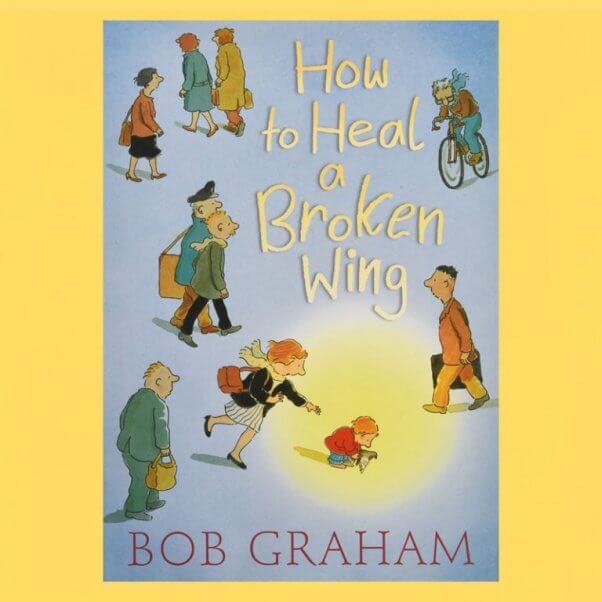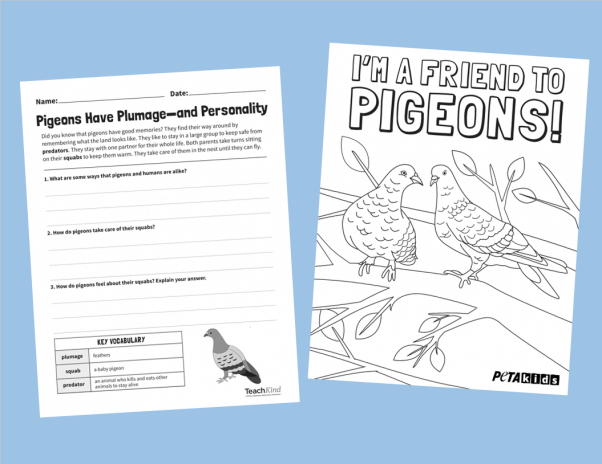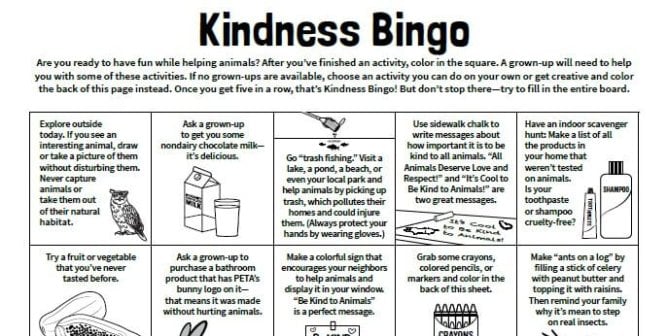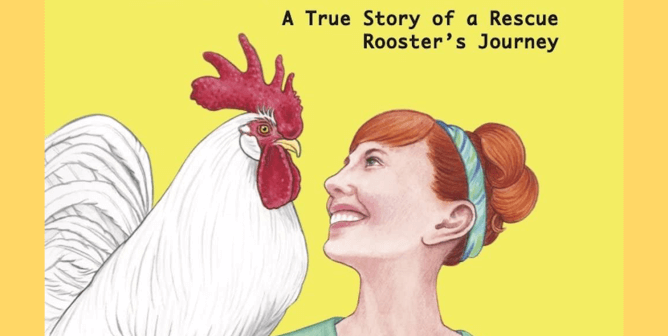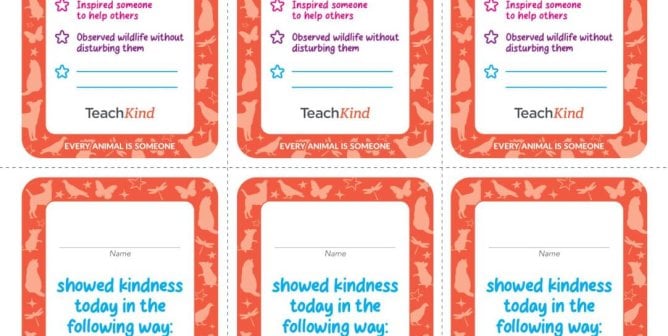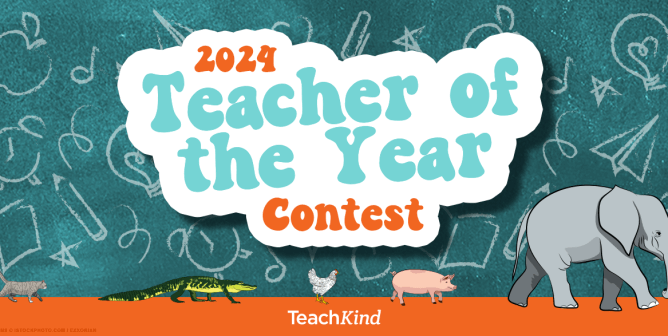‘How to Heal a Broken Wing’ and Other Lessons in Empathy
Social-emotional skills, such as demonstrating respect and empathy for others, can—and should—be taught alongside academic skills like reading and writing. Character education is legally mandated in many states, and brain research tells us that if we tap into the emotional domain of a child’s learning process while reaching the cognitive domain, students will retain more of the content and the information will move into their long-term memory.
By appealing to the innate sense of compassion that all children feel toward animals, we can motivate our students to not only learn but also apply what they learn in authentic ways. The award-winning children’s book How to Heal a Broken Wing by Bob Graham uses poignant illustrations and sparse text to tell the story of one person who took action when no one else would. Use the following activities—including a catchy song and creative craft—to practice reading comprehension, descriptive writing, and empathy for all living beings.
‘Did You Know?’ All About Pigeons! Video
Begin by playing “Did You Know? All About Pigeons!” a song and video all about pigeons. Written and composed by Tony Award winners Lisa Lambert and Greg Morrison, the video set to a playful tune uses adorable animation and age-appropriate language to reveal interesting facts about these marvelous birds.
Chances are your students have seen pigeons in their neighborhood—but they may not know that these birds can fly up to 50 miles per hour or that a baby pigeon is called a “squeaker.” Ask students what they were surprised to learn from the video, and have them share stories about their own experiences with pigeons.
‘How to Heal a Broken Wing’
Next, read Bob Graham’s How to Heal a Broken Wing to your students. Pause throughout the text to ask the following reading comprehension questions to check student understanding and stimulate empathetic thought.
- Cover: What do you think this story might be about? What clues are you using to make that prediction?
- Title page: Where does the story take place? What animals do you share your neighborhood with?
- Pages 3 and 4: What happened to the pigeon? How can you tell?
- Pages 7 and 8: Why is Will the only one who sees the pigeon?
- Pages 15–30: What do Will and his family members do to help the pigeon?
- Pages 31–34: How do you think the pigeon felt when Will set him or her free?
After reading, use these ideas to encourage understanding:
- Have students retell the story using key details.
- Discuss the central message of the story.
- Ask students these reading comprehension questions:
- What message does the author want to give us? What does he want us to learn from this story? (Answer: It’s important to help others and treat them the way you’d want to be treated.)
- Think of a time when you were hurt or sick. Who took care of you? What did they do? How did it make you feel?
- What should you do if you see a human or an animal who is hurt and needs help?
Discussion and Pigeon Craft
The story, along with the last reading comprehension question (above), will likely inspire your students to take action the next time they find an animal in need. Be sure to discuss safe ways children can help animals. Remind them that they should never approach or touch an animal they don’t know but should instead tell an adult, who can then call the appropriate animal rescuers. Tell students that they can help pigeons by not chasing them, throwing things at them, or doing anything else that may scare or harm them.
On a blank sheet of paper, have students complete this sentence: “I can help pigeons by ….” Have them create beautifully colored pigeons, and attach their writing pieces to the paper birds. Display them in your classroom or hallway.
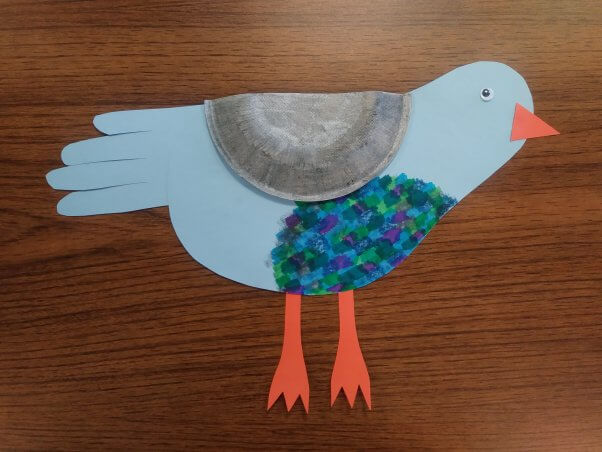
Materials for Each Student
2 sheets gray construction paper
1 sheet orange construction paper
Blue, purple, green, and gray paint, crayons, or markers
Half of 1 paper plate
Scissors
Glue
1 googly eye
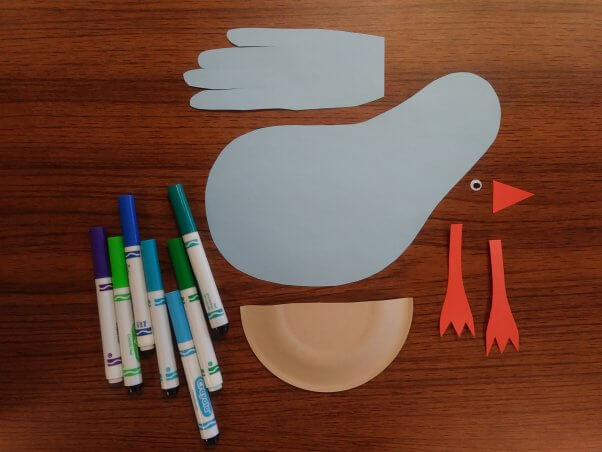
Instructions
Provide students with an image of a pigeon with beautifully colored plumage. Give them these directions:
- Draw the shape of a bird’s body onto one of the sheets of gray paper. Trace your hand with your thumb folded down on the remaining sheet of gray paper. Cut out both shapes.
- Draw one beak and a pair of feet and legs on the orange paper, then cut out the shapes.
- Using the blue, purple, and green implements, color the breast of the bird’s body. If using paint, allow to dry completely.
- Color or paint the paper plate gray. Allow to dry completely.
- Glue on the googly eye and beak to create the bird’s face. Glue on the legs and feet. Allow to dry completely.
- Glue on the hand-shaped tail feather followed by the paper plate wing. Allow to dry completely.
- Attach the writing pieces to the paper birds.
*****
Looking for more pigeon content to share with your students? Check out our pigeon factsheet and printable craft!
Continue building empathy for pigeons—and all living beings—with TeachKind’s “Pigeons Have Plumage—and Personality” reading comprehension worksheet and PETA Kids’ “Friend to Pigeons” coloring sheet. If you’re a science teacher, encourage students to observe birds and other wildlife from afar without disturbing them, using resources from Citizen Science for Educators.
Like these ideas? Stay up to date with new content and promotions by signing up for TeachKind News.
By submitting this form, you’re acknowledging that you have read and agree to our privacy policy and agree to receive e-mails from us.
